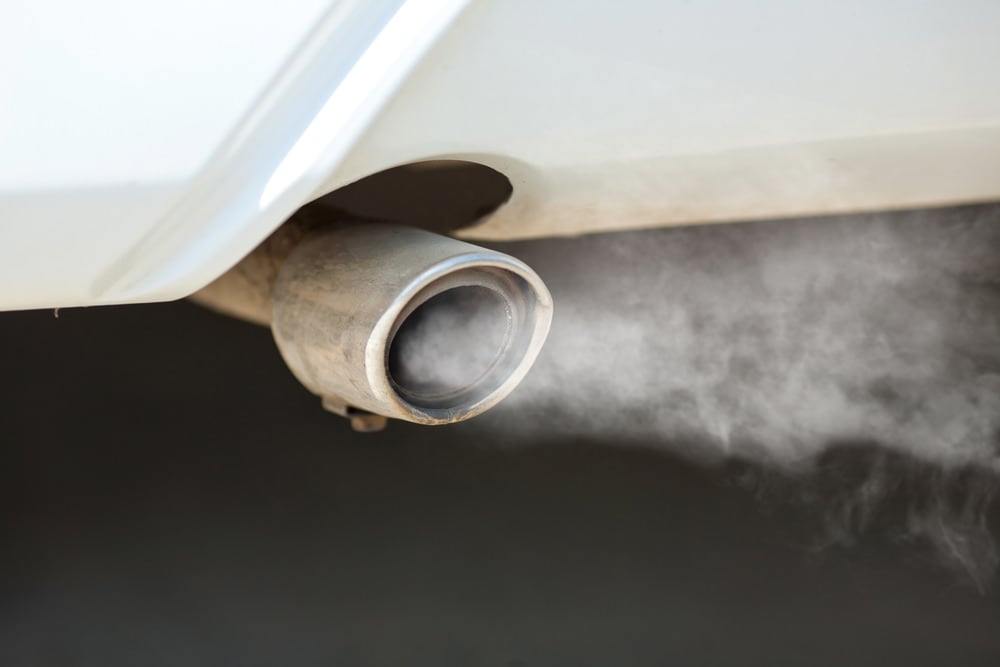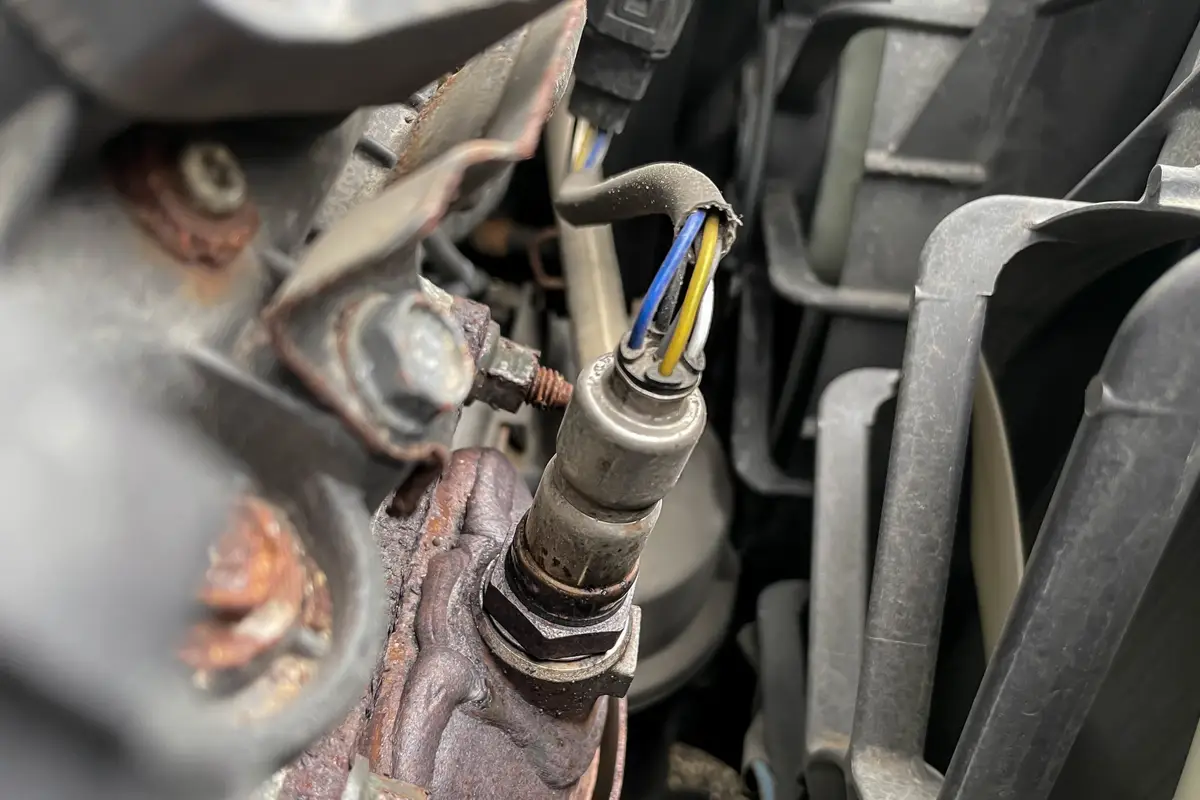As an Amazon Associate, I earn from qualifying purchases at no extra cost to you.
Roles of Upstream And Downstream O2 Sensors in the Exhaust System?
The upstream O2 sensor measures oxygen levels in the exhaust, while the downstream sensor monitors catalyst efficiency. The roles of the upstream and downstream O2 sensors are crucial for optimizing fuel efficiency and reducing emissions in the exhaust system.
By providing real-time data to the vehicle’s engine control unit, these sensors help maintain the ideal air-fuel ratio for combustion. The upstream sensor ensures the engine runs at peak performance, while the downstream sensor checks if the catalytic converter is functioning properly.
Understanding the functions of these sensors is essential for proper vehicle maintenance and ensuring that the vehicle meets emission standards.
What Are O2 Sensors?
What are O2 Sensors?
O2 sensors, also known as oxygen sensors, are vital components of the exhaust system in vehicles. They are responsible for measuring the levels of oxygen in the exhaust gases, providing crucial data to the engine control unit (ECU) for optimal fuel delivery and emission control. O2 sensors play a key role in ensuring the efficient operation of the engine and the overall performance of the vehicle.
Types Of O2 Sensors
There are two main types of O2 sensors commonly used in modern vehicles:
- 1. Upstream O2 Sensors: Installed before the catalytic converter, these sensors measure the oxygen levels in the exhaust gases as they exit the engine. The data obtained is used to adjust the air-fuel mixture for efficient combustion.
- 2. Downstream O2 Sensors: Positioned after the catalytic converter, downstream sensors monitor the oxygen levels in the exhaust gases after they have passed through the catalytic converter. Their primary function is to assess the converter’s efficiency in reducing harmful emissions.
Function Of O2 Sensors
The main function of O2 sensors is to continuously monitor the oxygen levels in the exhaust gases and provide real-time feedback to the ECU. This feedback allows the ECU to make immediate adjustments to the fuel injection system, ensuring the engine operates at an optimal air-fuel ratio for efficient combustion and reduced emissions. The data from the O2 sensors is essential in regulating the overall performance and environmental impact of the vehicle.
Upstream O2 Sensors
Upstream O2 sensors monitor exhaust gas composition before the catalytic converter, while downstream sensors analyze emissions after. This data helps optimize fuel efficiency and reduce harmful pollutants in the exhaust system.
Location Of Upstream O2 Sensors
Upstream O2 sensors are located near the exhaust manifold. These sensors are positioned before the catalytic converter in the exhaust system.
Role Of Upstream O2 Sensors
- Detects oxygen levels: Measures oxygen in exhaust gases for optimal air-fuel mixture.
- Monitors engine performance: Provides data to adjust fuel injection for efficient combustion.
- Regulates emissions: Helps the engine run cleaner and reduce harmful pollutants.
Downstream O2 Sensors
Location Of Downstream O2 Sensors
Located after the catalytic converter in the exhaust pipe.
Role Of Downstream O2 Sensors
- Monitor the efficiency of the catalytic converter.
- Help adjust fuel mixture to meet emissions requirements.
- Ensure proper combustion and reduce harmful emissions.

Credit: www.yourmechanic.com
Differences Between Upstream And Downstream O2 Sensors
Upstream and downstream O2 sensors play essential roles in the exhaust system of a vehicle. Understanding their differences is crucial for efficient operation and maintenance. Let’s take a closer look at the variations between these two types of sensors.
Position In The Exhaust System
Upstream O2 sensors are located before the catalytic converter, closer to the engine, while downstream O2 sensors are positioned after the catalytic converter, closer to the tailpipe.
Responsibilities And Function
The upstream O2 sensor measures the oxygen levels in the exhaust gases before they reach the catalytic converter. It provides data to the engine control module (ECM) to regulate the air-fuel mixture for optimal combustion. On the other hand, the downstream O2 sensor monitors the efficiency of the catalytic converter by detecting the remaining oxygen in the exhaust after it passes through the converter.
Importance Of O2 Sensors In The Exhaust System
Oxygen (O2) sensors play a crucial role in the exhaust system of vehicles. These sensors, including the upstream and downstream O2 sensors, are responsible for monitoring the levels of oxygen present in the exhaust gases. By constantly measuring the oxygen content, these sensors provide essential feedback to the engine control unit (ECU) to ensure optimal fuel efficiency and reduce harmful emissions. Let’s take a closer look at the importance of O2 sensors in the exhaust system.
Optimizing Fuel Efficiency
O2 sensors are key components in optimizing fuel efficiency. They continuously monitor the amount of oxygen in the exhaust gases and transmit this information to the ECU. Based on the data received, the ECU adjusts the air-fuel mixture flowing into the engine, ensuring it remains at the optimal ratio. By maintaining the ideal air-fuel mixture, O2 sensors help to maximize fuel combustion, thereby improving fuel efficiency.
Reducing Harmful Emissions
O2 sensors also play a crucial role in reducing harmful emissions from vehicles. By monitoring the oxygen levels in the exhaust gases, these sensors enable the ECU to adjust the air-fuel mixture to achieve a stoichiometric ratio—a point at which the engine burns fuel most efficiently and emits fewer pollutants. This precise control of the air-fuel mixture helps to minimize the release of harmful pollutants such as carbon monoxide (CO), nitrogen oxides (NOx), and hydrocarbons (HC).
Common Issues With O2 Sensors
In the exhaust system, upstream O2 sensors monitor the fuel mixture, while downstream sensors check the efficiency of the catalytic converter. Common issues with O2 sensors include sluggish response, contaminated sensors, and wiring problems. Ensuring these sensors function properly is crucial for maintaining fuel efficiency and minimizing emissions.
When it comes to the performance of your vehicle’s exhaust system, the role of oxygen (O2) sensors cannot be understated. These small but crucial components monitor and regulate the fuel-to-air ratio in the engine, ensuring optimal combustion and reducing harmful emissions. However, like any other automotive part, O2 sensors can sometimes encounter problems that hamper their functionality. In this section, we will explore some of the common issues that can arise with O2 sensors, including failure symptoms and the causes behind sensor failure.
Failure Symptoms
A malfunctioning O2 sensor can lead to a range of performance issues in your vehicle. Here are some common symptoms that indicate a potential problem with your O2 sensors:
- Persistent “Check Engine” light on your vehicle’s dashboard
- Decreased fuel efficiency and increased fuel consumption
- Poor engine performance, including hesitations and stalling
- Unusual exhaust odor or excessive black smoke from the tailpipe
- Inaccurate readings on your vehicle’s air-fuel ratio (AFR) gauge
If you notice any of these symptoms, it is essential to have your O2 sensors checked and replaced if necessary. Ignoring these issues can lead to further damage to your vehicle’s exhaust system and result in costly repairs.
Causes Of Sensor Failure
The failure of O2 sensors can occur due to a variety of reasons. Here are some of the most common causes behind sensor failure:
- Age and Wear: O2 sensors, like other electronic components, have a limited lifespan. Over time, the sensor’s performance may degrade, resulting in inaccurate readings and eventual failure.
- Contamination: O2 sensors can become contaminated by oil, fuel additives, or engine coolant, reducing their efficiency and causing them to fail.
- Excessive Heat: The high temperatures in the engine bay can deteriorate the sensor’s internal components and lead to failure.
- Physical Damage: Accidental impacts or damage caused during repairs can harm the O2 sensor’s delicate internal elements, rendering them ineffective.
- Poor Quality Fuel: Low-quality fuel with high levels of contaminants can impede the sensor’s performance and cause premature failure.
Being aware of these common causes of sensor failure can help you take preventive measures and ensure the longevity and effectiveness of your O2 sensors. Regular maintenance checks and replacing the sensors as recommended by your vehicle manufacturer are crucial steps in maintaining a healthy exhaust system.
Maintaining And Replacing O2 Sensors
The maintaining and replacing of O2 sensors is crucial for the efficient operation of a vehicle’s exhaust system. Upstream and downstream O2 sensors play vital roles in monitoring and adjusting the air-fuel mixture, ensuring optimal engine performance and reducing harmful emissions. Understanding the signs of O2 sensor maintenance and the steps to replace them is essential for car owners and enthusiasts.
Signs Of O2 Sensor Maintenance
Signs that indicate O2 sensor maintenance may be required include poor fuel economy, rough idling, increased emissions, and a check engine light illuminated on the dashboard. Faulty O2 sensors can lead to inefficient combustion and, in turn, cause damage to the catalytic converter. Regular inspection and prompt replacement of O2 sensors are necessary to prevent these issues.
Steps To Replace O2 Sensors
- Locate the O2 sensors underneath the vehicle or near the exhaust manifold.
- Use an O2 sensor socket and wrench to carefully remove the old sensors.
- Apply anti-seize compound to the threads of the new sensors before installation.
- Securely attach the new sensors and ensure proper connection to the wiring harness.
- Reset the vehicle’s ECM to clear any stored error codes and complete the replacement process.
Regularly replacing O2 sensors as part of routine vehicle maintenance can improve fuel efficiency, reduce emissions, and preserve the longevity of the exhaust system. Following these steps and being aware of the signs that indicate O2 sensor maintenance needs can help vehicle owners maintain optimal performance and environmental responsibility.

Credit: www.aliexpress.com

Credit: www.cars.com
Conclusion
Understanding the roles of upstream and downstream O2 sensors is crucial for efficient exhaust system function. Both sensors play a vital role in monitoring and adjusting the air-fuel mixture to optimize engine performance and reduce emissions. By working in tandem, these sensors ensure that your vehicle runs smoothly while minimizing environmental impact.


